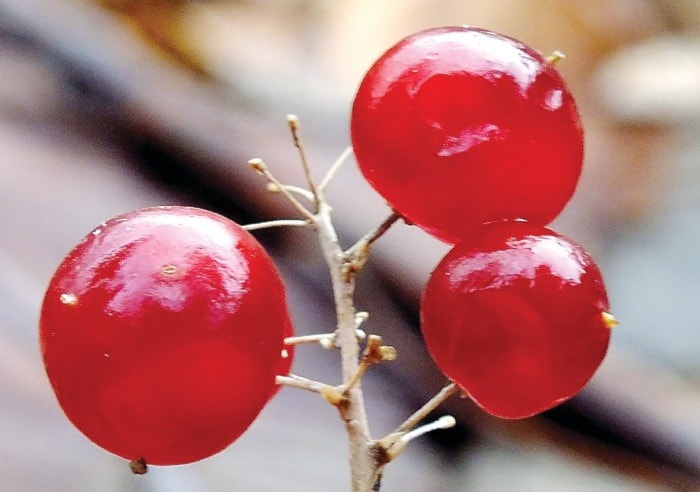Round, luscious WILD berries may not be front and centre in February, despite all those fruity red Valentine desserts.
Nevertheless, on a late winter woodland walk, one may discover autumn berries still on the stem, having overwintered quite well.
Many resident birds and mammals depend on this wild fruit for survival. Now is the best time to see remarkable berry survivors.
Prime among these are the Chinese red, translucent berries of False Lily-of-the-valley, which literally carpets most Sitka-spruce forests near the sea. Maianthemum dilatatum is among the west coast’s earliest perennials, and a plant well worth knowing.
Some northwest coast First Nations ate the berries as a late-winter ‘starvation’ food, but, while edible, the fruit was unpalatable and seldom held in high regard.
This plant’s heart-shaped leaves seem to fit right in with February’s theme, and next month, a faint, pleasant scent will exude from the tall, cone-shaped cluster-blooms.
Certain tree-fruits also weather the cold; Sitka mountain ash, Pacific dogwood, hawthorn and arbutus tend to retain some of their berries well into winter, to the benefit of many birds.
Late February is also prime time to hunt for spring’s first blossoms: salmonberry (young stem sprouts were eaten by all northwest coast peoples), swamp lantern (marshy areas alongside rivers) and kinnikinnick (seaside, along the Salmon Point trail).
Waiting for spring is an adventure; hunt for buds forming on trees, and foliage poking up out of the warming earth.
Email Christine at: wildernesswest@shaw.ca.
